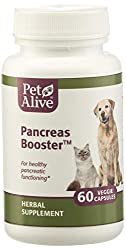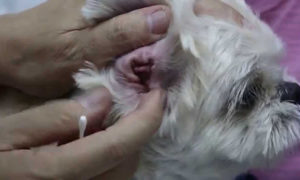
Pancreatitis in dogs: The pancreas is a humble but extremely crucial organ. It sits between the stomach and duodenum, and it produces digestive enzymes as well as insulin.
Insulin is an enzyme that helps the cells of the body convert glucose into energy. However, if the pancreas does not produce enough insulin, your dog most likely has diabetes. Various cells are responsible for making digestive enzymes within the pancreas that’s responsible for the proper breaking down of food. And it allows for the absorption of nutrients through the small intestine.
When your dog has pancreatitis, those digestive enzymes overflow in the organ and surrounding tissues, which causes pain and eventually damage. Pancreatitis in dogs occurs when you continue to feed your overweight canine high-fat foods and treats.
High-fat foods and snacks trigger the release of lots of digestive enzymes; however, the process goes rogue, and the enzymes start to digest the cells of the pancreas itself. This action worsens and eventually spreads as long as the organ continues to release more enzymes, which occurs after every meal your dog drinks or eats.
Also, what causes pancreatitis in dogs can be poor blood circulation to the pancreas or blocked pancreatic channels. However, those actions are not common. In general, chronic pancreatitis in dogs is rare in thin canines that get regular exercise and eat a well-balanced and healthy dog pancreatitis diet.
The symptoms of pancreatitis in dogs include severe abdominal pain, a loss of appetite, vomiting, and a fever of 103 degrees or higher. Sometimes, you may see your dog in a “praying” position (head down, front legs folded, and hind legs straight), which seems to help ease the abdominal pain and pressure.
Canine pancreatitis is diagnosed by testing for higher than normal levels of the digestive enzymes released by the pancreas into the bloodstream. Also, abdominal X-rays and ultrasound exams can reveal if the pancreas is swollen and in distress.
Pancreatitis in Dogs Treatment
The best dog pancreatitis treatment is to let the digestive tract rest completely, including a veterinary visit and the administering of IV fluids and absolutely no food, medication, or water by mouth. The vet will have to closely monitor your dog because of the widespread release of digestive enzymes and other pancreatic products that can occasionally cause severe complications in the lungs, heart, and kidneys.
The vet will offer your dog small quantities of water about one to three days after the dog’s last vomit; they’ll then have to monitor your companion for vomiting and pain. If the water does not cause any discomfort or complications, the next step is to prescribe a dog pancreatitis diet, including small amounts of low-fat, low-protein food.
Your dog will have to stay in the animal hospital until she can eat and drink without problems or relapses. The most common cause of relapse is eating or drinking too soon. Most dogs’ average time to recover from pancreatitis is several days to a week, which most likely will be in the animal hospital.
Regrettably, pancreatitis in dogs can return weeks or months after the 1st episode if the predisposing factors remain. Take this illness as a wake-up call that your dog needs to slim down and eat healthy dog food for pancreatitis. Also, please keep your dog away from fatty table foods and snacks, and exercise them regularly to keep them healthy for many years to come.
Please do not give in to your dog and continue to feed her human food. Your dog does not need to eat people food. Also, keep the garbage out of reach. According to vets, there are more pancreatitis cases during the holidays, when people and their pets eat more fatty foods.





